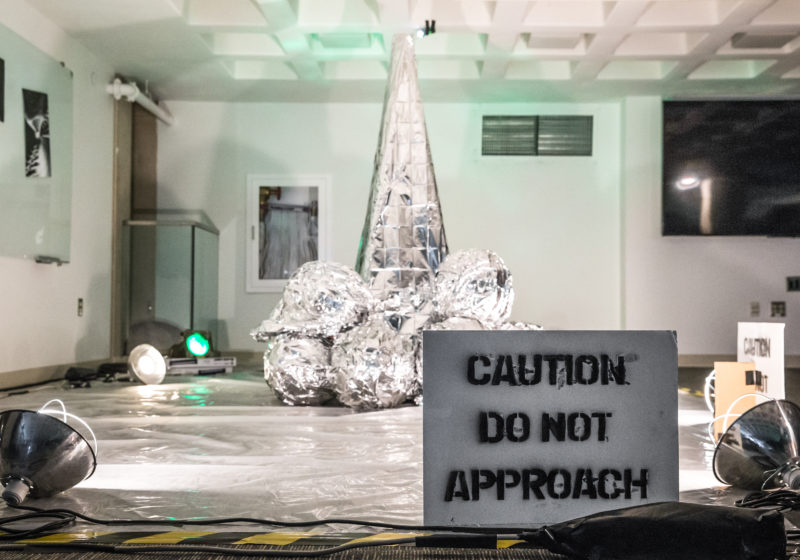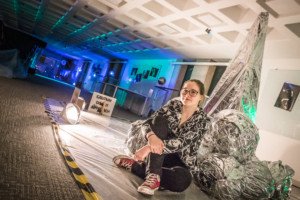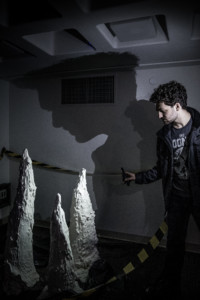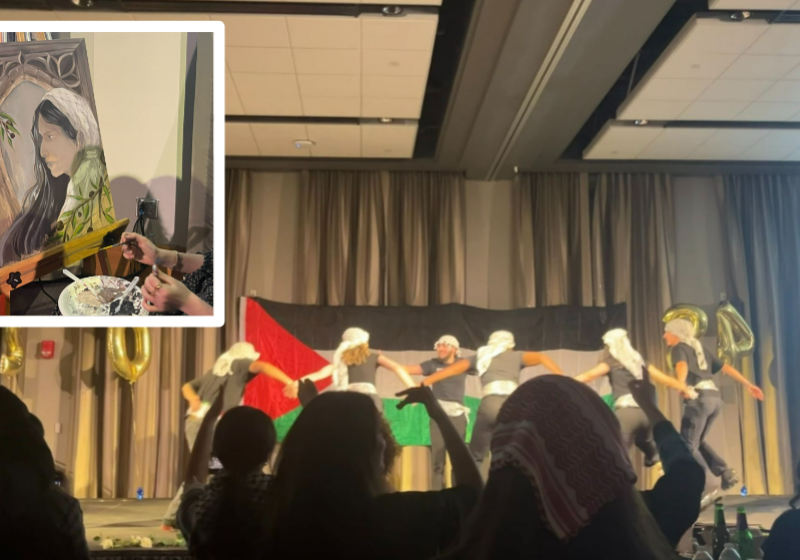“I’m not a subtle person.” This is Linnie Schell, the artist behind the installation extravaganza of “Homeworld,” which ran from Friday at 2 p.m. through Saturday at 11 p.m. and closed the upper floor of iZone for four days. It told the story of an alien crash site and a subsequent murder mystery through sculpture, video art, and a publicity campaign that mimicked the efforts of conspiracy theorists to show the world the lies of the so-called “Rhea Initiative.”
When I entered “Homeworld,” I was greeted with the two project rooms upstairs in iZone, with a remarkably well-produced, trippy video production that introduced me to the setting and concept playing on the screens inside. One was set up to look like a tornado was blowing through, with chairs and papers scattered everywhere. It was a kind of meticulous haphazardness. Donuts were suspended in the air over the table.
As I entered the main body of the installation, the droning ambient sound (composed by student Brenn Whiting) that hung over iZone and inundated the space immediately outside gave way to a melancholy main theme (senior Grant O’Brien) that set the tone for “Homeworld.” The interior of the exhibition was populated with sculptures (including a striking metallic one meant to mimic a UFO crash that became, in the eyes of Schell — and probably most of the rest of campus, a “space dick” — more video art, and writing and photography, some taken from prior exhibitions. The space was recognizable (I do spend a lot of time in iZone) but warped, seemingly alien with all its lights off and its tables and chairs replaced with Schell’s sculptures.
At the end of “Homeworld,” I was greeted with iZone’s final project room, inaccessible but visible through the clear panel that always separates it from the rest of the study space. On the table was what looked like a corpse under cloth, a disquieting departure from the usual iZone sights and a thought-provoking way to end the experience.
The way “Homeworld” engaged with the expectations I’d formed surrounding iZone intrigued me. This was art installed not in a gallery dedicated to that, but in a public place that a huge number of students here use and pass through. Schell, an E5 scholar with a project element in immersive installation art, had initially meant to set “Homeworld” up in Wilco, but eventually chose iZone and was impressed with how conducive the space was to projects like hers. “I was just really impressed with how supportive and how excited they were to do a project that no one had really done before.”
Schell is bored with ordinary galleries. After the success of “Underhill,” which she put on last year with Elise McCarthy in Drama House, “Homeworld” became the next step in installing art in non-traditional spaces. “It’s supposed to be playful, it’s supposed to be fun… it gives people a chance to feel like they’re part of the art.”







